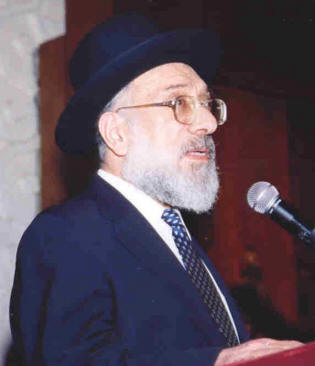
Eshagh Baalhanes
Early Life and Education
Family
Eshagh Baalhanes was born in 1938 into a devout Jewish family in Shiraz. His father, Mr. Meir Baalhanes, was one of the prominent artisans in Shiraz, making a living through craftsmanship, especially in casting.
School
Eshagh completed his primary and secondary education at Ganj-e Danesh School in Shiraz, which was also known as Kosar. He then pursued teacher training at the newly established Yeshiva in Shiraz, studying under esteemed religious scholars such as Harav Yehoshua Netan Eli, Ben Haim, and Harav Darashan.
Scholarship
Due to Eshagh’s natural talent and sharp insight, he quickly assumed a teaching role in the Shiraz Yeshiva. As a rabbi, he dedicated himself to his duties, motivated by his profound love for Jewish law, Halakha, and the needs of the Shiraz Jewish community. His commitment to preserving and maintaining traditions, strengthening national and ethnic beliefs, and educating the youth inspired him to become the first Jewish student from Shiraz to be selected for advanced studies in Jerusalem in September 1969.
Advanced studies in Jerusalem
Eshagh spent four years at the Tiferet and Porat Yosef Yeshivas, studying under highly respected rabbis, including Harav Ovadia Yosef, Harav Mordechai Eliyahu, Harav Havatov, Harav Raphael Abo, and Harav Cohen. He immersed himself in Jewish law, Torah, Mishnah, Gemara, and other advanced religious studies, achieving high distinctions. Like his peers—Rabbi Elbaz, Rabbi Maslaton, and Rabbi Zafrafi—he undertook significant responsibilities in Jewish communities worldwide, contributing to their religious and social development.
Rabbinical status
In 1973, Eshagh Baalhanes received his rabbinical degree (Rabbanut) from the Jerusalem Rabbinical Court, presided over by Harav Ovadia Yosef.
Marriage
During his studies, in 1971 (1350), he married his cousin Mehri from the Shilian family, who was also deeply engaged in religious studies. The couple was blessed with four sons and two daughters.
Return to Shiraz
Initial responsibilities
Rabbi Baalhanes returned to Shiraz after completing his studies. He was warmly welcomed by the Jewish community in Shiraz. His career began as a Hebrew teacher at the Otzar HaTorah Cultural Institute, responsible for teaching Torah and religious sciences. Following the departure of Harav Netan Eli to become the Deputy of Otzar HaTorah Tehran, Rabbi Baalhanes was appointed as the head of Otzar HaTorah in Shiraz.
Prioritizing the shortcomings
From the outset, Rabbi Baalhanes dedicated the majority of his efforts to systematically address the educational and social shortcomings within the Jewish community of Shiraz. He took significant steps to improve social conditions, particularly managing the Kosar schools. He collaborated closely with the Shiraz Charity Association, the Tehran Jewish Committee, and other cultural organizations across the region, playing a crucial role in resolving various social and religious issues that plagued the community.
Fighting poverty
Rabbi Baalhanes prioritized addressing the dire cultural and religious challenges faced by the low-income families in Shiraz. In the early 1970s, when poverty was rampant among Shiraz’s Jewish communities. Jewish families did not have baths at home, and the single public bath that existed was a ruin that lacked hygienic standards. With the support of the people and the Shiraz Charity Association, he took strategic and proactive steps to establish a modern public bath and a kosher mikvah for women on the land adjacent to the Kosar School, meeting both hygiene and religious standards.
Shohet deficiency
One longstanding issue was the kosher slaughtering and ritual butchery, a critical aspect of Jewish dietary law. Rabbi Baalhanes established training courses to educate knowledgeable shohets (ritual slaughterers). By training several dedicated young men in Shiraz and Tehran, he not only addressed the local needs but also filled a significant gap in larger cities like Tehran, where he sent skilled shohets temporarily.
Mohel, Matzah, and Kosher
Rabbi Baalhanes organized educational programs to train qualified mohels (ritual circumcisers) in Shiraz, Isfahan, and Kerman, ensuring these communities adhered to religious practices. Additionally, he established a matzah bakery aligned with hygienic and religious standards to meet the community’s annual needs, especially during Passover. He made arrangements for students and travelers in Shiraz to have access to kosher food and accommodations during these significant religious periods.
A Transformative Leader
Addressing religious needs
Rabbi Baalhanes’s appointment as the successor to Harav Netan Eli marked a pivotal moment for the Jewish community of Shiraz. He established educational groups to train young religious volunteers, equipping them to address the various spiritual and practical challenges within the community. His structured approach included creating four distinct groups: shohets for kosher slaughtering, Shaliach Tzibur (prayer leaders), chazzanim (cantors), and Torah teachers, ensuring that religious education and leadership were ingrained in the community’s fabric.
Transforming a generation
Youth education was always a priority for Rabbi Baalhanes. He formed Talmud Torah classes for children and teenagers at the Kosar School and other synagogues. His efforts in less than a decade led to a broad transformation within the Shiraz Jewish community, reinforcing religious adherence and traditional practices.
Rabbi Baalhanes’s mentorship enabled many talented young students to pursue rabbinical training (Semicha). These students, driven by a commitment to their faith, often succeeded in achieving high rabbinical status, further strengthening the community’s spiritual leadership.
Rabbi Baalhanes, a respected teacher and spiritual leader, served as the chief religious authority for the Jewish community of Shiraz. Through his dedication to preserving Jewish traditions and promoting faith, he not only achieved remarkable success but also became a prominent figure in Shiraz’s cultural and religious landscape.
Migration to Tehran
Transformations in Tehran
In 1988, Rabbi Baalhanes moved to Tehran, where he became a respected figure through his lectures and guidance, maintaining strong ties with the Shiraz community. He delivered lectures and conducted religious ceremonies at several major synagogues, including Abrishami, Yusef Abad, and Hakim, among others. On Shabbat evenings, Rabbi Baalhanes delivered inspiring religious sermons (Dvar Torah), guiding and educating the community on spiritual matters. He also took the initiative to establish Talmud Torah classes, planting the seeds for future Jewish education.
Maintaining relationship with Shiraz
Despite relocating, he maintained close ties with the Shiraz community, regularly traveling back to perform important religious duties, no matter how far they were. Whenever the opportunity arose for performing the mitzvot of Brit Milah (circumcision) and Ketubah (marriage contract), he would travel even to the most remote areas upon invitation to fulfill his religious duty to his fellow Jews.
Emigration to the United States
Settling in Los Angeles
In 1992, Rabbi Baalhanes and his family undertook an unplanned and reluctant emigration, initially settling in New York before moving to Los Angeles. In Los Angeles, he continued his lifelong dedication to religious service, particularly focusing on youth education and community leadership. He accepted the position of rabbi at Ohel Moshe synagogue, catering to the growing needs of the Iranian Jewish community, particularly in conducting religious ceremonies and preserving cultural traditions.
Becoming a trusted figure
Rabbi Baalhanes remained dedicated to addressing the needs of the youth, placing their issues at the forefront of his work. He established daily and evening classes focused on teaching religious law and providing guidance. His activities, marked by insight and experience, soon resonated with the Iranian community in Los Angeles. In a short time, he became the trusted figure for conducting key ceremonies such as Brit Milah, Ketubah, Bar Mitzvah, Bat Mitzvah, and funerals. His counsel was also sought by various cultural institutions, synagogues, and educational organizations, aiming to improve the conditions of his fellow Jews.
Building a new synagogue
By the mid-1990s, the need for a more fitting space for the community became evident, as the old and rented Ohel Moshe synagogue no longer sufficed. Driven by Rabbi Baalhanes’ vision, and with the collective efforts of community leaders and generous supporters, a new, spacious building was established, known as the Ohel Moshe Cultural Center.
Moving to New York
Rabbi Baalhanes’ growing influence was fueled by his unwavering commitment and the significant responsibilities he undertook. As the New York Jewish community’s needs became increasingly urgent, he was compelled to relocate once more, shifting his focus there.
Although his years were marked by constant travel between Los Angeles and New York, the demands of his role often kept him grounded in New York, where his presence was most needed.
One of his notable achievements was his role in establishing a modern, three-story synagogue in Brooklyn— a testament to his dedication and vision.
A Lasting Legacy
Despite dividing his efforts between two major cities, Rabbi Baalhanes never wavered in his mission. He continued to meet community needs, manage the synagogues, and lead with unwavering dedication. What set him apart was his refusal to accept any compensation for his services, whether conducting ceremonies or delivering sermons. His work was driven by a deep sense of duty, offering his time and guidance freely, a rare commitment that defined his legacy and further endeared him to those he served.


 فارسی
فارسی